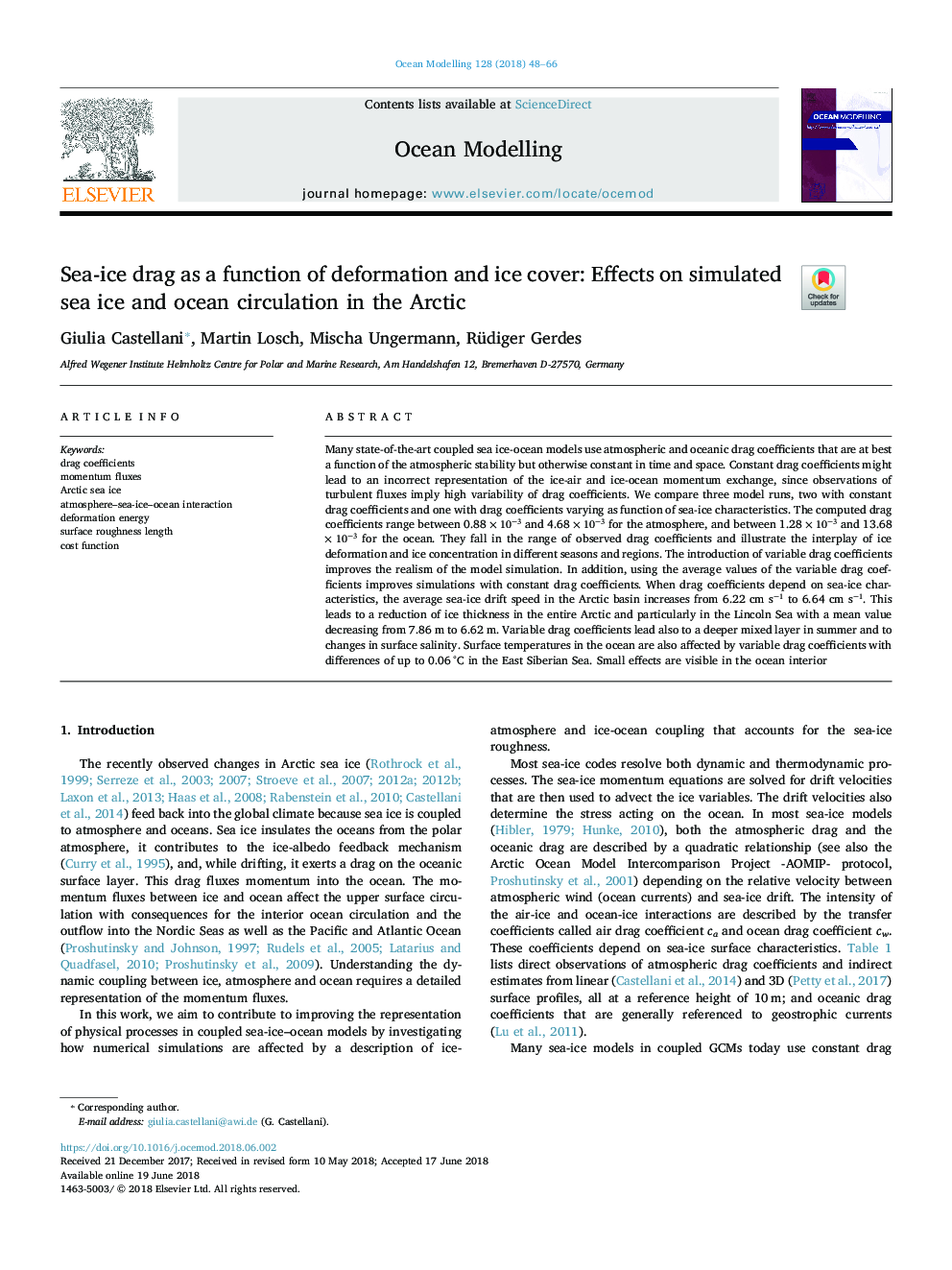| Article ID | Journal | Published Year | Pages | File Type |
|---|---|---|---|---|
| 8886489 | Ocean Modelling | 2018 | 19 Pages |
Abstract
Many state-of-the-art coupled sea ice-ocean models use atmospheric and oceanic drag coefficients that are at best a function of the atmospheric stability but otherwise constant in time and space. Constant drag coefficients might lead to an incorrect representation of the ice-air and ice-ocean momentum exchange, since observations of turbulent fluxes imply high variability of drag coefficients. We compare three model runs, two with constant drag coefficients and one with drag coefficients varying as function of sea-ice characteristics. The computed drag coefficients range between 0.88 Ã10â3 and 4.68 Ã10â3 for the atmosphere, and between 1.28 Ã10â3 and 13.68 Ã10â3 for the ocean. They fall in the range of observed drag coefficients and illustrate the interplay of ice deformation and ice concentration in different seasons and regions. The introduction of variable drag coefficients improves the realism of the model simulation. In addition, using the average values of the variable drag coefficients improves simulations with constant drag coefficients. When drag coefficients depend on sea-ice characteristics, the average sea-ice drift speed in the Arctic basin increases from 6.22 cm sâ1 to 6.64 cm sâ1. This leads to a reduction of ice thickness in the entire Arctic and particularly in the Lincoln Sea with a mean value decreasing from 7.86 m to 6.62 m. Variable drag coefficients lead also to a deeper mixed layer in summer and to changes in surface salinity. Surface temperatures in the ocean are also affected by variable drag coefficients with differences of up to 0.06â¯Â°C in the East Siberian Sea. Small effects are visible in the ocean interior
Related Topics
Physical Sciences and Engineering
Earth and Planetary Sciences
Atmospheric Science
Authors
Giulia Castellani, Martin Losch, Mischa Ungermann, Rüdiger Gerdes,
